Shevlin Sebastian's Blog, page 101
November 8, 2015
Countering A Cultural Loss
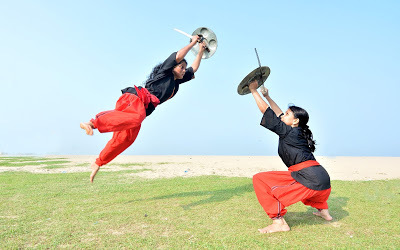
 The lack of popularity of Kerala's greatest martial art form, Kalaripayattu, in the home state, has made two women practitioners set out on a mission to revive it
The lack of popularity of Kerala's greatest martial art form, Kalaripayattu, in the home state, has made two women practitioners set out on a mission to revive itPhotos by Ratheesh Sundaram. Rosa Varghese (left) and Sajitha Menon
By Shevlin Sebastian At 2.30 p.m., one day, Rosa Varghese was walking down a road, with her daughter, Anna, who had just returned from school. From the opposite direction, Rosa saw two youths on a bike. As they came abreast, the pillion rider grabbed at Rosa's neck, assuming there would be a necklace. But Rosa was not wearing one. The pillion rider shouted to his friend, “Speed up”, but in a swift reflex action, Rosa grabbed him by the collar and pulled him down. He lay spread-eagled on the road, while the rider rode off.
Onlookers immediately rushed the spot. The police were called. And the youth was handed over.
“At that moment, I thanked [the art form of] Kalaripayattu,” says Rosa. “It was because of my training that I could react so fast.”
Rosa is the Kochi-based wife of a plantation owner. While searching for some exercise for her children to do, she stumbled upon Kalaripayattu. Now, along with her children, Varkey and Anna, and some friends, she has been training twice a week, under the tutelage of Sivankutty Asaan, a Kalaripayattu teacher, for the past eight years, at the Rotary Bal Bhavan centre at Kochi.
And Rosa is a transformed person. “Kalaripayattu is much more than fitness and losing weight,” she says. “It fosters well-being. And it empowers you. When I walk on the street I am not afraid at all. The usual reaction of women is to cower during times of danger. But through Kalaripayattu, I have learned how to block a blow.”
Her colleague, Sajitha Menon, the wife of a finance manager, agrees, “Earlier, I had been timid. Now I feel bold. Kalaripayattu has also taught me patience and calmness.”
But what is breaking their hearts is that very few people are learning Kalaripayattu. “This is one of Kerala's oldest martial arts form,” says Sajitha. “But people see all these fights, with swords, on television and think it is a violent sport. But that is not true at all."
Says Sivankutty Asaan, “Kalaripayattu has been a science that has been perfected over many centuries. Unfortunately, it has been reduced to an item number in films. It is a cultural loss.”
To combat this loss, Rosa and Sajitha are on a mission to popularise it. Last April, the duo held a 20-day programme, open to all, at St. Teresa's College. Participants included a grandmother, a housewife, school and college-going students. “A few of them continued after it was over, for a while, but then studies and other issues came up,” says Rosa.
A few days ago, they attended a women's forum meeting held at entrepreneur Madhu Babu's house at Kochi. "We spoke about the benefits of Kalaripayattu," says Rosa. "Many of the women were receptive." Says participant Dr. Lakshmi Babu, “I always felt that Kalaripayattu was difficult to do,” says Lakshmi. “But Rosa and Sajitha have convinced me otherwise."
The duo has appeared on radio shows and television channels. They also gave a talk to a women's group at the Rotary Club (Milan). At an alternative lifestyle centre, they put up a notice board promising to conduct classes for those who are interested.
The pair had an eye-opener while taking part in the district as well the national championships held at Kochi in August. "The organisers, contestants as well as the coaches spoke about the lack of funds,” says Sajitha. “So now we are trying to get corporate sponsors. We have approached many companies, and the response has been encouraging. The sport desperately needs an image makeover." Incidentally, at the nationals, among the women, Sajitha won a gold in free hand-fight (46 kgs), while Rosa won a bronze in the 52 kgs category.
Meanwhile, as the locals ignore Kalaripayattu, people from all over the world are coming to Kerala to learn it. In fact, during their training, sometimes, foreigners came to watch. “They were from Canada, Germany and the Reunion Islands,” says Rosa. “Lucille, from France, told me that ballet and contemporary dance has damaged her knees. But, in Kalaripayattu, we have never suffered any injury, because it is done so scientifically. One reason is that before any exercise we do a lot of stretching movements.”
Rosa pauses and says, “Popularising Kalaripayattu has become our life mission.”
(Sunday Magazine, The New Indian Express, South India and Delhi)
Published on November 08, 2015 21:51
November 5, 2015
Caring For The Elderly
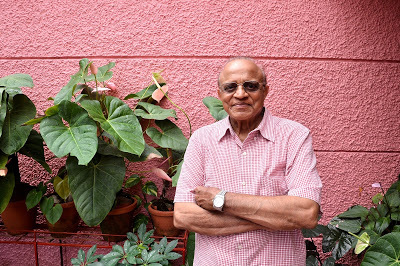
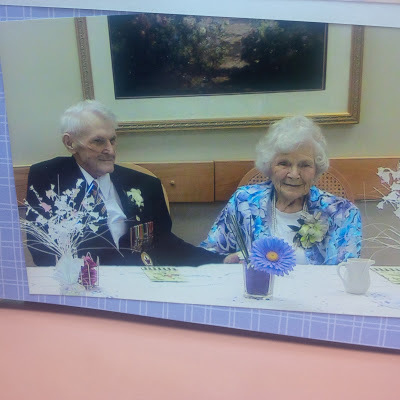 Thomas Kannampuzha, from Narakkal, near Kochi, runs three old-age homes in Ontario, Canada. He talks about his experiences
Thomas Kannampuzha, from Narakkal, near Kochi, runs three old-age homes in Ontario, Canada. He talks about his experiencesPhotos: Thomas Kannampuzha. Photo by Ratheesh Sundaram. Murray Craig and Gwen Taylor got married on May 14, 2011. Murray was 98 while Gwen was 93. However, Murray died in 2013.
In Thomas's department of 177 employees, only four were non-Maharastrians. “I could feel the animosity indirectly,” says Thomas. “They could not do anything directly because I was the boss. But I did not feel safe. So my option was to stay on in Mumbai and go through the difficult times or emigrate.”All the homes have an activity department, which organises an exercise programme, music, dance and games. “The residents are kept busy throughout the day,” says Thomas. “Most of the time they are active participants.”Thomas' heart also beats for his native land. He has done numerous social works, like donating beds, wheelchairs and walkers to various hospitals in Kochi, all through his Narakkal-based friend Cherian Parakal. “Thomas has donated two dialysis machines to the Kristu Jayanti Hospital,” says Cherian. “He has also provided land and the money to build 28 houses for the poor. And helped many people to undergo kidney transplants, as well as heart surgery.”Finally, when asked about Kochi, Thomas says, “The city is developing well. It is a bit chaotic, but I believe it is for the good of the people. It increases employment opportunities.”
(The New Indian Express, Kochi and Thiruvananthapuram)
Published on November 05, 2015 20:28
November 4, 2015
When The Mind Went Blank
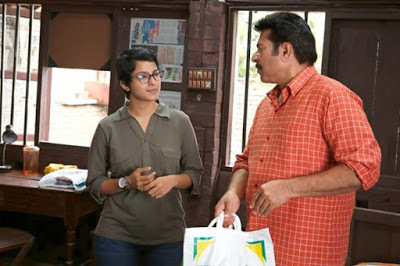 COLUMN: Location Diary
COLUMN: Location Diary Aparna Gopinath talks about her experiences on the sets of 'Munnariyippu' and 'ABCD'
Photo: Aparna Gopinath and Mammooty in the film, 'Munnariyippu'
By Shevlin Sebastian
On a summer morning, in March, 2014, Aparna Gopinath felt nervous and excited at the same time. Today would be the day that she would be shooting her first scene opposite superstar Mammooty in the film, 'Munnariyippu'. While Mammooty plays convict C.K. Raghavan, Aparna is a journalist by the name of Anjali Arakkal, who is ghost-writing the autobiography of the jail superintendent.
So, just before Mammooty arrived on the set, at Kozhikode, Aparna went about mouthing the dialogues to all and sundry on the set. “Instead of saying good morning, all I said was my dialogues,” she says.
Finally, Mammooty arrived. The scene was set in an office of a jail. But when Mammooty came and stood opposite Aparna, inexplicably, she went blank. So when director Venu said, “Action,” there was no sound from Aparna. And this went on for 16 takes.
“All my self-confidence was shattered,” she says. “And I began to feel that I am the worst actor alive in Mollywood. I looked at Venu Sir with a most apologetic face.”
In fact, when Venu had signed Aparna for the film, he had specifically mentioned that there would be no prompting. “This meant that I had to memorise all the dialogues,” she says.
Eventually, Mammooty got into the action. He came in front of the camera and said, “I will show you what to do.” And Aparna immediately said, “No, Sir, I will get even more confused.”
What was surprising was that Aparna had to only say a simple dialogue: “If there is nobody, I will be there for you.”
Finally, Aparna said, tongue-in-cheek, “Mammooty Sir, I think it is better that you say the dialogue to me.” This brought a smile to the superstar's face.
“This was one of my most unforgettable experiences on a set,” she says. “Mammooty Sir was a darling, and never got upset at all.”
But he did tease her. So whenever an assistant would inform him that everything was ready for the next shot, Mammooty would say, “Does the heroine have any lines?” And if the answer was yes, he would immediately say, “Then I will come after five minutes. Ask her to learn the lines.”
Incidentally, this was not Aparna's first experience. For her debut film, 'ABCD', in September, 2012, there was a shoot at the Cochin University of Science and Technology at Kochi. Aparna played Madhumitha, a college student, who was the love interest of Dulquer Salmaan.
She had to give a three-page dialogue. But the director, Martin Prakkat, said that they would shoot it in bits. “So I learnt, according to the cuts, as suggested by Martin,” says Aparna. However, the next day, when Aparna came to the set, Martin suddenly said, “We will shoot it in one take.”
And Aparna went completely blank.
(The New Indian Express, Kochi and Thiruvananthapuram)
Published on November 04, 2015 21:22
November 3, 2015
Time-Tested Love
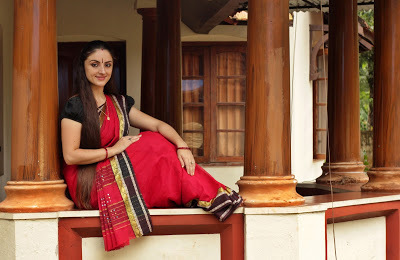
 COLUMN: Spouse's Turn
COLUMN: Spouse's Turn Paris Laxmi talks about life with the Kathakali dancer Pallippuram Sunil
Photo of Laxmi by Albin Mathew
By Shevlin Sebastian
Paris Laxmi was only seven years old when she saw Kathakali dancer Pallippuram Sunil perform at a theatre in Fort Kochi. She had come with her parents, Yves, a stage artist and poet, mother Patricia, a sculptor, and brother Theo Narayan from Aix-En-Provence in France. “I was amazed by Sunil’s dancing,” she says. “When we met the artistes, as a family, I liked Sunil the most. He seemed kind and calm. I always remember that performance.”
Laxmi returned to Fort Kochi again with her family when she was 16 years old. “I had a desire to meet Sunil,” she says. And when she did meet him, she felt a great happiness. Every day, she, along with Theo, and her parents would go and watch the performances. But her father was not happy. Laxmi was neglecting her studies for the baccalaureate (Plus Two) exams.
One day, Yves told Laxmi she could not go to the theatre unless she finished her studies. Not surprisingly, she started screaming and crying. Then Laxmi told her mother, “You don't understand what Sunil means to me.”
Patricia said, “You must realise that if he is the person for you, then the time will come. But you must wait for that moment.”
In 2010, when Laxmi again came for a visit, Sunil said, “When are we getting married?” So, it confirmed to Laxmi what she already knew: Sunil also had feelings for her, although he was 14 years older. “But we had a compatibility, because of our passion for the arts,” says Laxmi. The wedding date was fixed for September 14, 2012.
A few months before that day, Laxmi converted to Hinduism through a Vedic puja, conducted by the Arya Samaj, at Vaikom.
On the day of the wedding, held at the Mahadeva Shiva temple at Vaikom, Laxmi wore a bright red saree, with sequins, along with gold jewellery. “From childhood I had always watched Bollywood movies,” she says. “So I had an image of the Hindu bride wearing a red saree.” As for Sunil, he wore the typical Malayali male attire of an off-white shirt and mundu.
At the reception, many Kathakali maestros came up to Laxmi and expressed their appreciation of her dress. “They also said that I looked good in my make-up,” she says. “In fact, I got up early and applied it myself.”
The couple, however, did not go for a honeymoon. “Sunil promised to take me to Munnar and I am still waiting,” says Laxmi, with a smile.
But, sometime later, they went to the Kapaleeshwarar temple in Mylapore, a temple which is close to Laxmi's heart. And there is a reason for that. In 2009, Laxmi went to study at Dr. Padma Subrahmanyam’s ‘Nrithyodaya School of Dance’ in Chennai. “Every now and then I would go and pray at the temple for my marriage to take place,” says Laxmi. “So when I went there with Sunil, to offer our thanks, I felt very happy.”
Meanwhile, when asked her husband's plus points, Laxmi says, “Sunil is very calm. It is rare that he gets angry. He is kind, honest and trust-worthy. My husband understands me very well.”
In fact, on the weekends, Laxmi hardly has any time, because she is busy teaching students at their jointly-run Kalashakti School of Arts at Vaikom.
“On those days, Sunil does the cooking, because I am too tired,” says Laxmi. “When he is tired I will make the food. At home there is a sharing of work. We eat Malayali food, but, sometimes, I make French cakes and tarts, which Sunil likes.”
As for his negative traits, Laxmi says, “Sunil finds it difficult to say no. He is worried about what the other person will think. Another trait is his reticence. He does not talk much. But like every woman, I am keen to know what my husband is thinking. And what are his feelings regarding a particular situation. But after three years of marriage Sunil is learning to express himself.”
In their spare time, the couple love to watch movies, especially Malayalam ones. They usually go to a theatre at the nearby town of Thalayolaparambu. The last movie they saw was the Mammooty starrer, 'Pathemari'. “I understood most of the dialogues,” says Laxmi. "And we both loved [the romantic hit] 'Ennu Ninte Moideen'.
One reason for her keen interest is because Laxmi is acting in Mollywood films. She did a small role in 'Bangalore Days' and will be seen in Rajesh Nair’s 'Salt Mango Tree', in a supporting role. But in Krish Kymal's film, 'Olappeeppi', she will be playing the heroine opposite Biju Menon. “In both I play a foreign woman,” she says.
Finally when asked to give tips for a successful marriage, Laxmi says, “Don't try to please the husband and forget yourself. One day, when you show your real face, he will get a shock. Be genuine at all times. Also, never stop communicating with your spouse, especially if there are problems.”
(The New Indian Express, Kochi and Thiruvananthapuram)
Published on November 03, 2015 21:40
November 2, 2015
Soothing, as well as Emotional
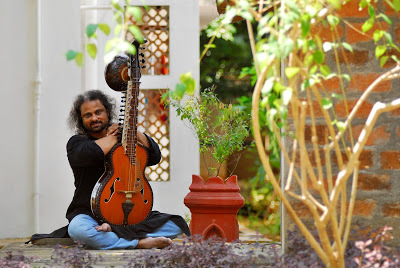 Poly Varghese, the first Malayali to play the mohan veena, has been enthralling audiences all over the world, including prisoners and blue-collar workersPhoto by R. Satish Babu
Poly Varghese, the first Malayali to play the mohan veena, has been enthralling audiences all over the world, including prisoners and blue-collar workersPhoto by R. Satish Babu By Shevlin Sebastian
One day, in 1984, Poly Varghese went to his mridangam teacher Sivadasan Nair's house, inside the Kerala Kalamandalam (a classical arts institution), at Thrissur, to watch a TV programme. It was a recital by Pandit Vishwa Mohan Bhatt on the mohan veena. As he listened to the music, Poly became spell-bound. “The melodious sound of the instrument attracted me intensely,” says Poly. “It was also meditative and highly emotional.”
Sivadasan offered Poly a plate of idlis and chutney. But so engrossed was Poly that he forgot to eat it. “My mind was in a daze,” he says. “It was at this moment that I decided I wanted to become a mohan veena player.”
It took a lot of effort to get Bhatt's Jaipur address. Poly wrote a fervent plea, in a mix of English and Hindi sentences, to the maestro, to become his student. But he got no response.
Poly realised he needed to go out of Kerala to fulfill his dreams. Soon, he heard that Mohan Kumar, a teacher of literature, at the Kalamandalam, had secured a job at Vishva Bharati University in Santiniketan, West Bengal. Through him, Poly secured admission, and, in 1990, he began to learn the tabla, as well as Hindustani vocals.
In 1994, Poly heard that Pandit Vishwa Mohan Bhatt was going to have a performance in Kolkata. So, he went for it. After the event, he met Bhatt and introduced himself. Bhatt immediately remembered the letter. When Poly asked whether he could become a student, Bhatt replied that the mohan veena was a difficult instrument. “To learn it is my life's desire,” said Poly. Bhatt stared hard at Poly. Finally, he nodded. So Poly went to Jaipur. He spent the next five years learning from the master.
Thereafter, he left. And, for another 15 years, he continued practising on his own. But, to earn his living, Poly acted in theatre and films, and provided music for movies. And, amazingly, for a while, he was a tabla player, during night soirees for customers at Sonagachi, Kolkata's famous red-light district.
Asked why he took so long to play the mohan veena in public, Poly says, “I wanted to be perfect. This instrument has no frets or notations. So, it is very difficult to play.”
But once he came out, through a performance in Abu Dhabi, in 2010, he has been performing non-stop. Today, he is regarded as the first Malayali to play the instrument. So far, he has performed in 40 countries, including Bahrain, Austria, Germany, Hongkong, China, Taiwan and the USA.
He admits that there is a difference between Indian and Western audiences. “Indian audiences have a judgemental attitude,” says Poly. “One reason is because they may have heard the music before, because it is part of their culture. They might have even attended one of Pandit Vishwa Mohan Bhatt's concerts.”
On the other hand, Westerners come to enjoy the music. “Hence, they are very receptive,” he says. “They believe Indian musicians are highly talented and spiritual.”
But Poly has also played for audiences who cannot afford to come to air-conditioned auditoriums. Sometime ago, he performed for the prisoners at the Poojapura Central Jail in Kerala. “After the show, a murderer asked me for my address,” says Poly. “He wrote me a letter in which he said, 'I did not know music was so powerful till I heard your performance. I have made many mistakes in my life. And I hope to correct my life from now on.'”
Poly has also played in the labour camps of Dubai, at cancer institutes, slums, orphanages and hospitals. “Most of these people have very little hope,” he says. “So I want to bring joy to them. That is the power of the mohan veena. It always creates a highly emotional reaction.”
That was evident at the October 2 state government-sponsored function, 'Milae Sue Mera Tumhara', a fusion music progamme at Thiruvananthapuram, comprising 40 musicians. Poly played a riveting interlude, the 'Raaga Keeravani', with sitarist Ravi Chary. Says the show's director Manoj K Varghese, “Poly's music is powerful in its gentleness. He is a gifted musician who is unforgettable.”
(Sunday Magazine, The New Indian Express, South India and Delhi)
Published on November 02, 2015 22:20
November 1, 2015
Caring For The Less Fortunate
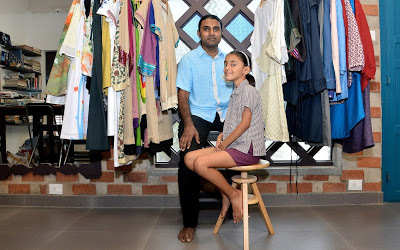
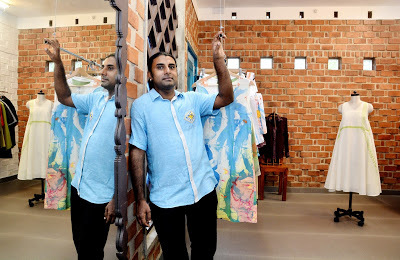 Fashion designer Joe Ikareth has a noble passion: he makes clothes for the physically challenged
Fashion designer Joe Ikareth has a noble passion: he makes clothes for the physically challengedPhotos by Ratheesh Sundaram
By Shevlin Sebastian
It was a heart-breaking moment for Joe Ikareth. At his daughter, Tilotama's birth, ten years ago, there were complications. A network of nerves that sends signals from the spine to the shoulder, arms and hands was cut off. As a result, Tilotama has limited mobility in her arms and a partially-paralysed right arm.
But as Tilotama grew up, she proved to be an inspiration for the fashion designer. Joe began to make clothes that made it easy for Tilotama to wear. “So, I would design a dress with a larger arm area, and instead of a zip, I would use Velcro [hoop and loop fasteners] or a magnet,” says Joe.
Today, Joe is focused on making clothes for the physically challenged. He is using natural fabrics, like the Kerala handloom cloth. “I have plans to use cloth, which will not get spoilt, if a liquid falls on it,” he says. “And most of the clothes will not need ironing.”
Joe is hoping to make it economically viable for the customers. But there are difficulties in India. Most of the physically challenged, numbering 70 million, are not in the best financial situation. So, Joe will be tying up with NGOs and social service groups, so that they can subsidise the clothes.
Meanwhile, in Europe, Joe's differently-able fashion line, called the Move Ability Clothing, is gaining acceptance. He was a finalist at the Danish Business Cup, 2015, and was in the Top 25, along with his partner, Danish designer Jeanette Kaeseler Mortensen, in the ‘NORDEN-Nordic Innovation Living Challenge’ at Copenhagen. Says Jeanette: “Joe has exquisite technical skill and a strong creative competence.”
In India, also, there is acceptance. The Mumbai-based marketing consultant, Suranjana Ghosh Aikara, who is an above-knee amputee, wears the clothes made by Joe. “His clothes are functional and fashionable,” says Suranjana.
Her favourite is a pair of trousers, made of indigo linen. “It looks like a skirt, and has a flexible waistband, so it is easy to wear,” she says. “Usually, there is wear and tear when you use a prosthetic leg. A jeans, after using it 15 times, tends to tear. But Joe has made two layers. So, it lasts longer.”
Lakshmi Menon, a trustee of the Kochi-based NGO, ‘Good Karma Foundation’ describes the clothes designed by Joe, as “beautiful and elegant”.
The designer has a specific reason to make elegant clothes. “I want to help increase self-esteem, develop confidence, and also change the way people look at differently-able persons,” he says.
Apart from the differently-able, Joe is also designing uniforms for hotels, companies and hospitals. For a new hospital at Kochi, he was asked to design a uniform for nurses. So he analysed the colours that would be soothing for patients, who are housed in a building, which has large windows and plenty of light. His conclusion: light blue or salmon pink. “If you apply design and movement to an uniform it becomes very interesting,” he says.
Incidentally, Joe passed out from the National Institute of Fashion Technology, New Delhi, in 1996. Thereafter, he got the opportunity to work with designer Suneet Varma. Thanks to his three-year stint, Joe got an idea of how the fashion industry works.
“In the initial years, it used to revolve around the wedding season, with its kurtas, pyjamas and formal clothes,” says Joe. “But now it has become a huge business. A designer needs the help of several assistants, to make the creations, and to meet deadlines.”
In 1999, Joe took the risky decision to relocate to his home town of Kottayam. But as soon as he put up his web site he began getting orders. The Cobblestone Gallery in Sussex, England, asked Joe to design clothes for plus-size people. Mohiniyattom dancer Brigitte Chataignier, of France, who has a dance studio at Shoranur, gave him a commission to make clothes for her dancers. Joe has also worked with Kalaripayattu and Kathakali artistes. “I make dresses which are a balance between the traditional and modern,” he says.
(Sunday Magazine, The New Indian Express, South India and Delhi)
Published on November 01, 2015 20:53
October 29, 2015
Freeze Frames

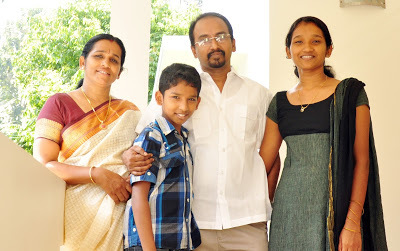 COLUMN: Spouse’s Turn
COLUMN: Spouse’s Turn Sindhu talks about life with the Mollywood screenwriter S. Suresh Babu
Photos by Rajeev Prasad
By Shevlin Sebastian
At her home in Vallamkulam, near Thiruvala, Sindhu would sometimes catch a glimpse of her neighbour, S. Suresh Babu. At that time, he was studying at the NSS College in Changanacherry, while Sindhu was doing her pre-degree in Mar Thoma College, Tiruvalla. Soon, her friends, who studied at NSS College, spoke about the artistic talent of Suresh, who was the editor of the college magazine.
“For some reason, I developed a strong affection for Suresh, because he was an artist,” says Sindhu. After a while, whenever they saw each other, they would smile. Since there were no mobile phones, they could not speak to each other.
After a year or so, Sindhu stopped seeing Suresh. When she enquired from her friends, they told her that Suresh was now studying at the Fine Arts College at Thiruvananthapuram. After a long interval of not seeing him, a desperate Sindhu wrote a letter to him saying that she liked him. Thereafter, Suresh came back home the following weekend, but they could not meet. Soon, he began returning every weekend.
Finally, one morning, when Sindhu was going to the bus stop on her way to college, Suresh met her and asked whether what she wrote in the letter was true. “I said that I meant what I had written,” says Sindhu. They discussed the matter in detail. And both agreed that they wanted to get married to each other.
But since Sindhu's father, Gopalakrishnan Nair was very strict, there was no way he would agree to a love marriage. So they decided to wait three years, till Sindhu finished her degree. In the meantime, on every Wednesday, a letter would come from Suresh to the college for Sindhu. And she would reply also.
On the morning of March 9, 1992, Sindhu told her parents she was going to college and walked out of the house with just a notebook. She took a bus and got down at Tiruvalla. Suresh was waiting in a car with his friends, Dileep, film director, Shiva Prasad and his wife Sudakshana.
They immediately went to the registry office in Kottayam, where Suresh and Sindhu got married. From there, the group went to Dileep’s house in Mallapuram.
On the same evening, an elderly person of their locality, called Prasannan, after being briefed earlier by Suresh, went and informed both sets of parents about the marriage. Predictably, an incensed Gopalakrishnan Nair went to Suresh’s house and told his elder brother Ramesh that his daughter should be brought home within 24 hours.
But later, Sindhu’s mother, Lalitha, persuaded her husband to accept the marriage. However, for five years, the parents had no contact with Sindhu, because her father was angry and upset. “It was a painful time for me,” says Sindhu.
Meanwhile, soon after the marriage, Suresh got a job in a newspaper, as an illustrator, and the couple settled in Kottayam. Today, they live in Kumaranelloor and Suresh is enjoying a successful screenwriting career in Mollywood. His latest film is ‘Kanal’, which was released a few days ago, with Mohanlal in the lead. Some of the other films he has written include ‘Naadan’, ‘Shikaar’, ‘Thandavan’ and ‘Dada Sahib’.
Asked about her husband’s plus points, Sindhu says, “Suresh is a loving person. He has always cared for me. He does not have any vices like drinking or smoking. We are more like friends rather than husband and wife.”
His only negative is that he is short-tempered. “But that is momentary and he never keeps any resentment in his heart,” says Sindhu. “So I don’t get upset when he loses his cool.”
Like most artistic people, the work comes first. “I always tell Suresh that, instead of blood, he has cinema in his veins,” says Sindhu, with a smile. “It is his passion. And I don't have a problem with that.”
In fact, Sindhu is an active collaborator. After Suresh writes his scripts by long-hand, it is Sindhu who keys it into the laptop. “Whatever he writes, he will show it to me and I will give my opinion,” says Sindhu. “I try to react like an ordinary person. If I am working in the kitchen, he will suddenly come and ask me to read something. Unlike most wives, I will not say that I will complete my work and come. Instead, I will stop whatever I am doing and read what he has written.”
But Suresh’s soul mate is his daughter, Aparna, 23, who is a writer like him. “Sometimes, he asks Aparna for her opinion,” says Sindhu. The couple also has a son named Apoo, 14.
As a father, Suresh is very lenient. “He never scolds them and gives them whatever they want,” says Sindhu. “I tell him that there is no need to fulfill all their wishes. They might get spoiled. They should learn to accept a no.”
Finally, Sindhu has tips for those who want to enter Mollywood. “I always tell young people to get a job and follow their passion for cinema on the side,” says Sindhu. “Or, at least, get a spouse who has a job. The problem is that if you don't have talent you will not be able to survive. After a few years, there will be a painful realization that you are going nowhere. By then you may find it difficult to find another career.”
(The New Indian Express, Kochi and Thiruvananthapuram)
Published on October 29, 2015 23:52
October 28, 2015
Cooking Food The Natural Way
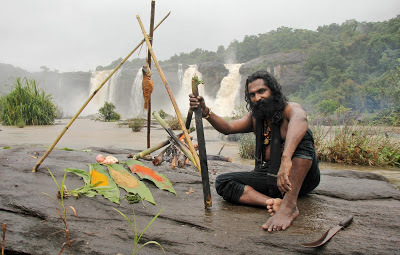
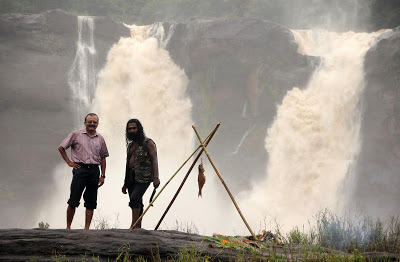 Tribal chef Baiju Vasudevan uses bamboo stems and firewood to make his dishes By Shevlin Sebastian
Tribal chef Baiju Vasudevan uses bamboo stems and firewood to make his dishes By Shevlin SebastianPhotos by Albin Mathew
At 1.30 p.m., on a rainy Monday, tribal chef Baiju Vasudevan is standing on a rock, with a dead fish in his hand. The monsoon rain is falling steadily. In the background is the gushing Athirapally waterfalls in Kerala. The roar can be heard all around. Just next to him is the fast-moving and swollen Chalakudy river.
Baiju takes a knife, gets down on his haunches, and swiftly takes the scales off. Thereafter, he rubs the masala – a mix of coriander, turmeric and chilli powder – all over the fish. He chops up the fish, as well as the tapioca, onions and tomato into small pieces.
Then Baiju runs towards a bamboo grove nearby. Quickly, he pulls down a bamboo, and cuts it into three smaller ones. All the food material is stuffed into the hollow stem of the bamboo. A couple of leaves are used to cover the open ends. Since the rain has not ceased, Baiju hangs up a tarpaulin sheet by tying the ends to the branches of a nearby tree. Then he puts pieces of wood and coal in a circle, pours a bit of coconut oil, and lights it. Once the fire starts burning, he places the bamboo tubes in it.
“It is at this moment that the Adivasi tribals sing a song,” says Baiju. “When the song ends five to seven minutes later, the food is cooked.”
Tribal food hit the media spotlight during the shooting of Mani Ratnam’s 'Raavan' in August, 2009, at the Athirapally Waterfalls. The stars of the film, Aishwarya and Abhishek Bachchan, were staying at the nearby Rainforest resort, where Baiju was providing the tribal food.
“I removed all the bones and made a fish preparation,” says Baiju. “Aishwarya liked it. Then Abhishek also tasted the food, which included chicken, and he also enjoyed it. For the next few nights, they continued to eat my food, at dinner-time. After a while, they began to call me ‘Bamboo Baiju’.”
Later, when the celebrity couple left, Aishwarya wrote in the visitors' book: ‘Thank you Baiju. Wonderful dinners. Will never forget.’
It has been an astonishing and improbable journey for Baiju, who looks like a cross between a rock star and a prophet: shoulder-length hair, a long beard, bare-bodied, with a rudraksha necklace, and a black scarf, as well as sandal paste on his forehead. He grew up in the hills near the Athirapally waterfalls. From a young age, he would wander about in the forests. He learnt cooking by watching his father, who would cook for weddings and family celebrations.
But he got the best tips about tribal cooking from an elder called Kunchu Isho of the Kadar community. “He told me that you can make a hole in the ground, place the food inside leaves, cover the hole and then put a fire on it,” says Baiju. “After a few minutes, the food is ready.” It usually consists of tapioca, honey and fish.
Baiju’s life changed, when, one day, in 2005, he saw a car parked near a forest. So he walked up to the driver and asked whether he needed any help. “Yes,” said OC Thomas, the owner of Rainforest. “I want to see the jungle.” So Baiju took him on a tour, and impressed Thomas with his encyclopaedic knowledge of the trees, birds and animals. Later, Thomas hired him as a guide for the hotel guests.
And it was on another trip with Thomas and his wife that Baiju cooked a meal for them, using ingredients which he collected from a nearby tribal colony. “There was a unique taste,” says Thomas. “I believe that some of the bamboo flavour seeps into the food.” Later, Thomas asked Baiju to provide tribal food for the resorts' guests. And that led to the fateful meeting with the Bachchans.
Today, Baiju is part of a resort called Chedi Spring Valley. He is also a competent snake-catcher, and an actor. He has finished the shoot for a Malayalam film, called '168 Hours'. “But cooking is my first love,” he says, with a smile.
(Sunday Magazine, The New Indian Express, South India and Delhi)
Published on October 28, 2015 00:50
October 27, 2015
A Home Away From Home
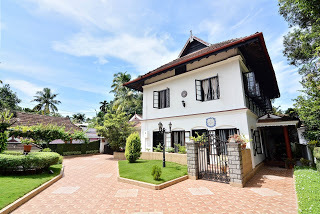
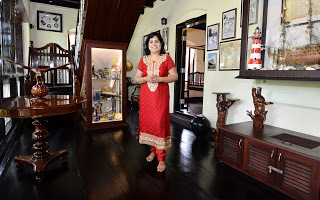 Neema Veliyath's homestay, 'The Bungalow', on the Vypeen islands, near Kochi, is a hit among travellers
Neema Veliyath's homestay, 'The Bungalow', on the Vypeen islands, near Kochi, is a hit among travellersPhotos by Ratheesh Sundaram
By Shevlin Sebastian
At 8 a.m., on a cool December day, Dianne Robertshaw, 63, got up from her bed at 'The Bungalow', a homestay on the Vypeen islands, near Kochi, feeling groggy. She had yet to shake off the jetlag, after the long flight from London. Suddenly, there was a knock on the door. When Dianne opened the door, she saw that it was the owner, Neema Veliyath. “What would you like for breakfast: Continental or Indian?” said an earnest Neema.
With a wry smile, Dianne said, “Neema, if we wanted a continental breakfast, we would have stayed at home. We have come all the way to taste your food."
It was a lesson that Neema never forget. “Thereafter, I have always served Kerala or Indian food to my foreign guests,” she says.
Neema's guests come from countries like Britain, France, Spain, Germany, USA and Canada. The foreigners come to enjoy the experience of living with an Indian family. At Neema's house, there is her husband, Francis, her 15-year-old daughter, Olivia, and her parents, PJ Johnson, a retired company executive, and mother Mariyamma.
The big attraction for the guests is the house. It is 85 years old and was built by Neema's great-grandfather PV Joseph Puthenpurackal. “He built it just before the wedding of his daughter, Mary,” says Neema. While the ground floor is in the colonial Portuguese type, with half-glass wooden windows, the first floor is in Dutch style, with large windows and a wooden landing. As for the attic, it is in Kerala style, with a slanting roof and Mangalore tiles. The beds, windows and floors are made of teak and rosewood. And on the stairs, you can see cast-iron grilles.
The idea to start a homestay came to Neema in 2007, when visitors, on the way to Fort Kochi, would stop and ask for permission to take photographs of the house. “Many of them asked me to start a homestay,” says Neema.
She had just returned, after a decade of sailing all over the world with Francis, a captain. They decided to settle down at their ancestral home, when Francis got a job as a pilot in the Cochin Port.
So it is no surprise that the homestay has a touch of the sea. The two bedrooms, on the first floor, which are let out to guests, are called the 'Sao Gabriel' and the 'Santa Maria'. While the 'Sao Gabriel' is the name of the ship used by Vasco De Gama on his first visit to India, 'Santa Maria' was the name of Christopher Columbus' ship when he set out for America.
The bedrooms are airy and cool, while the wooden beds are strong and comfortable.
What usually happens is after breakfast, the guests venture out and return in the evenings. A few of the women are interested in learning how to cook Kerala food. So Neema conducts classes in the evenings. “I make vegetarian, as well as non-vegetarian dishes, but my speciality is seafood like prawns, mussels and crabs,” says Neema. “The guests help me cook the food and we eat it together.”
For many guests, staying at a homestay is a welcome change. “They want to know our culture and lifestyle,” says Neema. “They are hugely surprised that my parents are living with us.”
Another charm of staying in a homestay is the sense of novelty. “Guests have told me that wherever they go in the world the hotel rooms look the same,” says Neema. “Only the skin colour of the people is different. So, they yearn for the personal touch.”
Indeed, thanks to Neema's personal touch, she has been getting rave reviews on Trip Advisor. Says teacher Martin William Campbell from London: “From the moment we arrived at 'The Bungalow', we were overwhelmed by Neema's generous and incredibly warm hospitality. She insisted that our children treat her home like their own and even stocked the fridge with treats for them.”
As for Boon-Mee Son Chai, a Bangkok-based lawyer, he had intended to take his family out to eat on most nights. “But the food at the Bungalow was so good that we never went out,” he says. “It was the best we had anywhere in India.”
Incidentally, “The Bungalow' has won the Trip Advisor Travellers Choice Award for the past three years, as well as the Certificate of Excellence for the past five years. “I enjoy making my guests feel happy,” says Neema.
(Sunday Magazine, The New Indian Express, South India and Delhi)
Published on October 27, 2015 03:26
October 25, 2015
Friendly, Peaceful and Successful
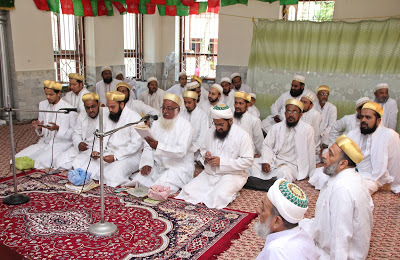
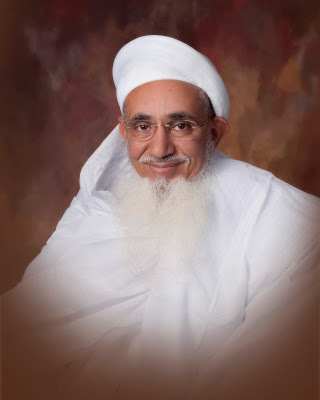 The small Dawoodi Bohra community in Kochi has integrated well in society, despite their distinctive dress and culture
The small Dawoodi Bohra community in Kochi has integrated well in society, despite their distinctive dress and culturePhoto of the Bohra community by Albin Mathew; Syedna Maulana Abu Jaffar Sadiq Mufaddal Saifuddin
By Shevlin Sebastian
One day, in April, 2014, just before he set out for the Badri mosque at Thoppumpady, Fort Kochi, Shabbir Cochinwala, 37, looked at himself carefully in the mirror. After a while, he felt satisfied. His gleaming white cap (topi) was in place, as well as his kurta, a jacket (saya), and pyjamas.
It was a momentous day, because the Supreme Leader of the Dawoodi Bohras, Syedna Maulana Abu Jaffar Sadiq Mufaddal Saifuddin, had come for a visit. The 35 families, which comprise about 135 people, were present in all their finery. This was just three months after Syedna Mufaddal Saifuddin's father, Sydena Mohammed Burhanuddin, had died at the age of 99 in Mumbai.
“Syedna blessed us and said that he was very happy to be in Kochi, and to meet all of us,” says Shabbir. Senior community member Shireen Fakrudhin calls it an extraordinary event. “In just 45 minutes, Sydena detailed the entire history of the community, beginning from Prophet Mohammed,” she says. “We felt so happy.”
The Bohras, like the Jews, are one of the tiniest communities in Kochi. According to the history, there were two migrations from Gujarat 150 years ago.
One group, who went looking for business opportunities, came from the town of Sidhpur in Mehsana district. “Another section came from Jamnagar and Kathiawad,” says Sadiq H Kapasi, the secretary of the Dawoodi Bohra Jamaat. “They had migrated due to a severe famine.”
And all of them set up businesses in timber and hardware. “Today, most of us remain entrepreneurs,” says Sadiq. So strong is the instinct for being an entrepreneur that Shabbir, an engineer, who had successful stints in the IT industry, in Chennai, Singapore and Bournemouth, Britain, gave it all up in 2004, and became a hardware businessman in Kochi.
“I felt the urge to come back because, at heart, I am a businessman,” says Shabbir. “Of course, as my own boss, there is a lot more pressure and tension. But because we are in business, our belief in God becomes all the more, because we don't know when or where our next rupee is going to come from.”
Incidentally, his father's hardware firm, Abdul Hussain Abdul Kader & Company, is more than 100 years old.
As a second-generation Bohra Muslim, Shabbir knows to read, write and speak in Malayalam. “However, because of our attire and diction, the local people know that we are not Malayalis,” he says. “But they also know we are part and parcel of Kerala.”
Says Sadiq, “The people treat us with a lot of respect especially because of the way we conduct ourselves. We are also a peace-loving community. In fact, the Syedna won a Global Peace Award recently.”
Even the women in the community are treated well. Most of them can be seen in Kochi, in their colourful burqas (rida), with printed flowers and embroidery. “The women are well educated,” says Shireen. “There are doctors, teachers, engineers, and architects. But there are also quite a few who run home-based outfits like catering, stitching, and online businesses. This ensures a good work-life balance.” In fact, Shabbir’s wife, Zainab, runs an online travel agency.
Because of their small number, the community has to look outside for marriage alliances. Parents usually send their children’s bio-data to the online portal of the Mumbai-based Taiseer-un-Nikah Committee. Then a meeting is arranged where the boys and girls meet. “There are counsellors to help them find the right person,” says Sadiq.
And unlike most communities, the Bohras do not have a dowry system. “In fact, the bridegroom’s family gives gold ornaments to the girl, according to their financial status,” says Sadiq.
And although they have lived in Kochi for decades, they remain in touch with their roots. Once a year, Shireen goes to Sidhpur, where her ancestral house remains in good condition, and meets up with relatives. “It’s good to have two homes,” says Shireen. “My heart beats with affection for both places.”
(Sunday Magazine, The New Indian Express, South India and New Delhi)
Published on October 25, 2015 21:57



